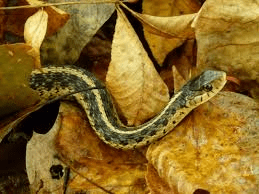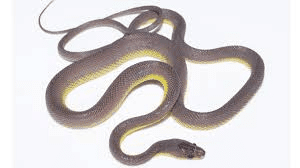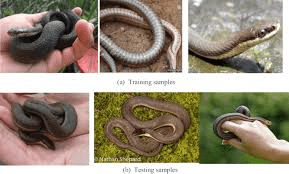Snakes are diverse creatures that inhabit a wide range of environments. They vary greatly in their habits, diets, and roles in their ecosystems. Understanding the different types of snakes, their habitats, behaviors, and conservation status is crucial for appreciating these fascinating animals.
This guide covers the types of snakes, including venomous and non-venomous varieties, and provides insights into their habitats, behaviors, and the myths and facts surrounding them.
Venomous Snakes
1. Pit Vipers
Habitat and Distribution: Pit vipers are found mainly in the Americas, from the southern United States to South America. They thrive in diverse habitats, including forests, grasslands, and swamps.
Behavior and Diet: Pit vipers are ambush predators, waiting for prey to come close before striking. They primarily feed on small mammals, birds, and amphibians.
Conservation Status: Most pit vipers are not endangered, though some species face threats from habitat loss and human activity.
How to Identify: Pit vipers have triangular heads, vertical pupils, and heat-sensing pits between their eyes and nostrils. They often have distinct color patterns and large fangs.
2. Elapids
Habitat and Distribution: Elapids are found in Africa, Asia, Australia, and the Pacific Islands. They inhabit a variety of environments, from rainforests to deserts.
Behavior and Diet: Elapids are active hunters and rely on their neurotoxic venom to immobilize prey. They feed on small mammals, birds, and reptiles.
Conservation Status: While many elapids are not endangered, habitat destruction and the pet trade pose risks to some species.
How to Identify: Elapids have slender bodies, fixed fangs, and often bright or striking coloration. Examples include cobras and kraits.
3. Sea Snakes
Habitat and Distribution: Sea snakes are found in the Indian and Pacific Oceans. They live in coral reefs, mangroves, and sandy areas.
Behavior and Diet: Sea snakes are excellent swimmers and feed mainly on fish and eels. They are generally shy and rarely bite humans.
Conservation Status: Some sea snake species are threatened by habitat loss and pollution.
How to Identify: Sea snakes have flattened bodies and paddle-like tails, which aid in swimming. Their coloration can vary from bright patterns to more subdued hues.
Non-Venomous Snakes

1. Colubrids
Habitat and Distribution: Colubrids are the most diverse snake family and are found worldwide, except in polar regions.
Behavior and Diet: Most colubrids are active hunters or foragers. Their diet varies widely, including insects, small mammals, and birds.
Conservation Status: Many colubrids are common and not threatened, but some species face habitat loss.
How to Identify: Colubrids vary greatly in size and color. They generally have small, non-retractable fangs and can be found in various patterns and hues.
2. Boas and Pythons
Habitat and Distribution: Boas and pythons are found in tropical and subtropical regions. Boas are mainly in the Americas, while pythons are in Africa, Asia, and Australia.
Behavior and Diet: These snakes are constrictors, killing prey by wrapping around it and squeezing. They feed on large mammals, birds, and occasionally reptiles.
Conservation Status: While many boas and pythons are not endangered, some species are threatened by habitat loss and the pet trade.
How to Identify: Boas and pythons have thick, muscular bodies and may have heat-sensing pits. They are often large and have distinctive patterns.
Read Also: 15 Medicinal Health Benefits Of Artemisia Annua (Sweet Wormwood)
Common Species of Snakes

1. Garter Snakes
Habitat and Distribution: Garter snakes are found throughout North and Central America. They inhabit forests, grasslands, and near water sources.
Behavior and Diet: Garter snakes are active hunters that feed on insects, amphibians, and small fish.
Conservation Status: Garter snakes are generally not endangered and are widespread.
How to Identify: Garter snakes are slender with distinctive longitudinal stripes, which can be yellow, green, or red.
2. Corn Snakes
Habitat and Distribution: Corn snakes are native to the southeastern United States. They are often found in forests, grasslands, and agricultural areas.
Behavior and Diet: Corn snakes are constrictors and primarily eat small mammals, such as mice and rats.
Conservation Status: Corn snakes are not endangered and are popular pets.
How to Identify: Corn snakes have reddish-orange bodies with black and white patterns, making them easy to recognize.
3. King Snakes
Habitat and Distribution: King snakes are found in the Americas, from the southwestern United States to Central America. They live in various habitats, including deserts, forests, and grasslands.
Behavior and Diet: King snakes are constrictors and feed on other reptiles, including venomous snakes, as well as small mammals and birds.
Conservation Status: King snakes are generally not endangered and are adaptable to various environments.
How to Identify: King snakes have a variety of color patterns, including stripes and bands, and can sometimes be mistaken for venomous species due to their coloration.
Read Also: 15 Medicinal Health Benefits Of Lysimachia clethroides (Gooseneck Loosestrife)
Snake Myths and Facts

1. Myth: All snakes are dangerous.
Fact: Most snakes are non-venomous and harmless to humans. Only a few species are venomous, and many of them are shy and avoid human contact.
2. Myth: Snakes chase people.
Fact: Snakes do not chase humans. They may strike if threatened, but they generally prefer to avoid confrontations and will retreat if given the chance.
3. Myth: Snakes can dislocate their jaws to eat large prey.
Fact: Snakes do not dislocate their jaws. Instead, they have highly flexible jaws and can stretch their mouths to accommodate large prey.
4. Myth: All venomous snakes are aggressive.
Fact: Many venomous snakes are not aggressive and will only bite in self-defense. Most bites occur when a snake is accidentally stepped on or handled.
5. Myth: A snake bite is always fatal.
Fact: With prompt medical treatment, most snake bites are treatable and not fatal. Antivenom and other treatments can effectively manage the effects of venom.
Conclusion
Understanding the types of snakes, their habitats, and behaviors provides valuable insight into their role in the ecosystem. Whether venomous or non-venomous, each snake species has unique characteristics and ecological significance.
By learning about their identification and addressing common myths and facts, we can better appreciate these remarkable creatures and ensure safer interactions with them.
Read Also: How to Graft an Avocado Tree to Produce Avocado Fruit
Frequently Asked Questions
We will update this section soon.

